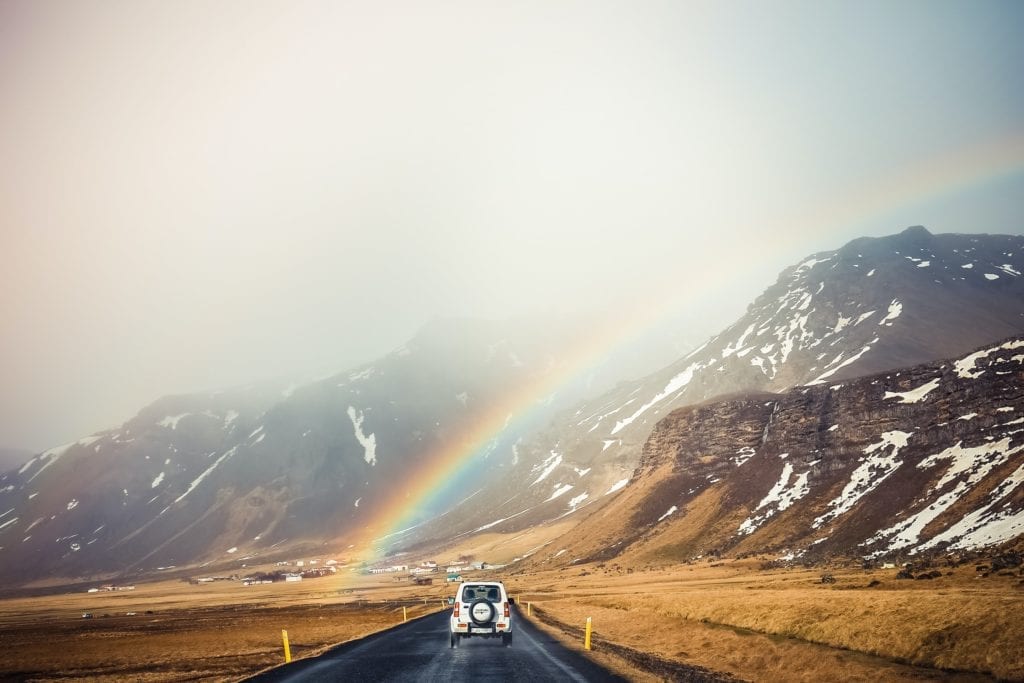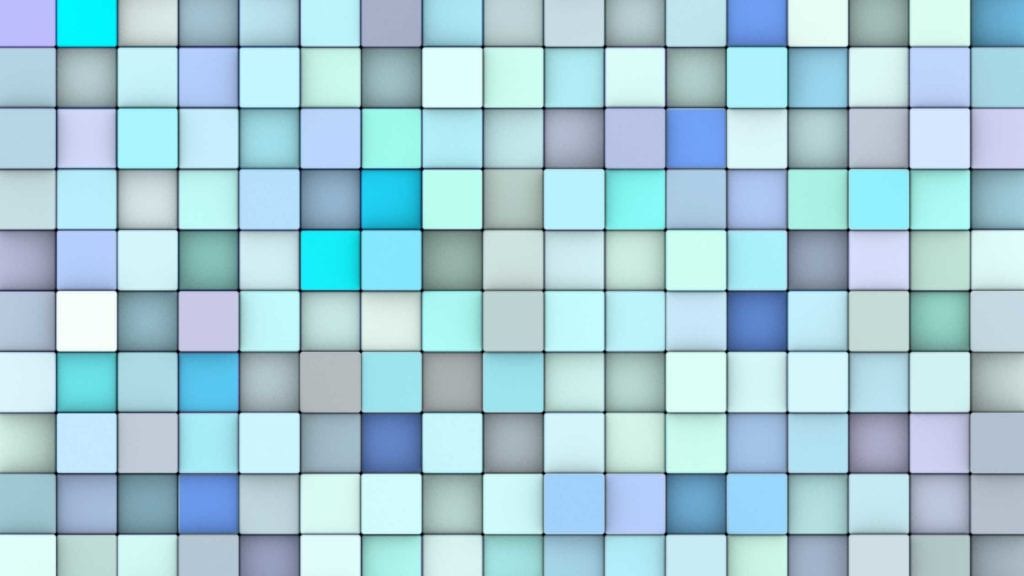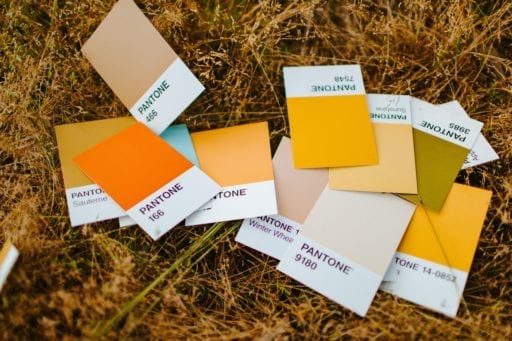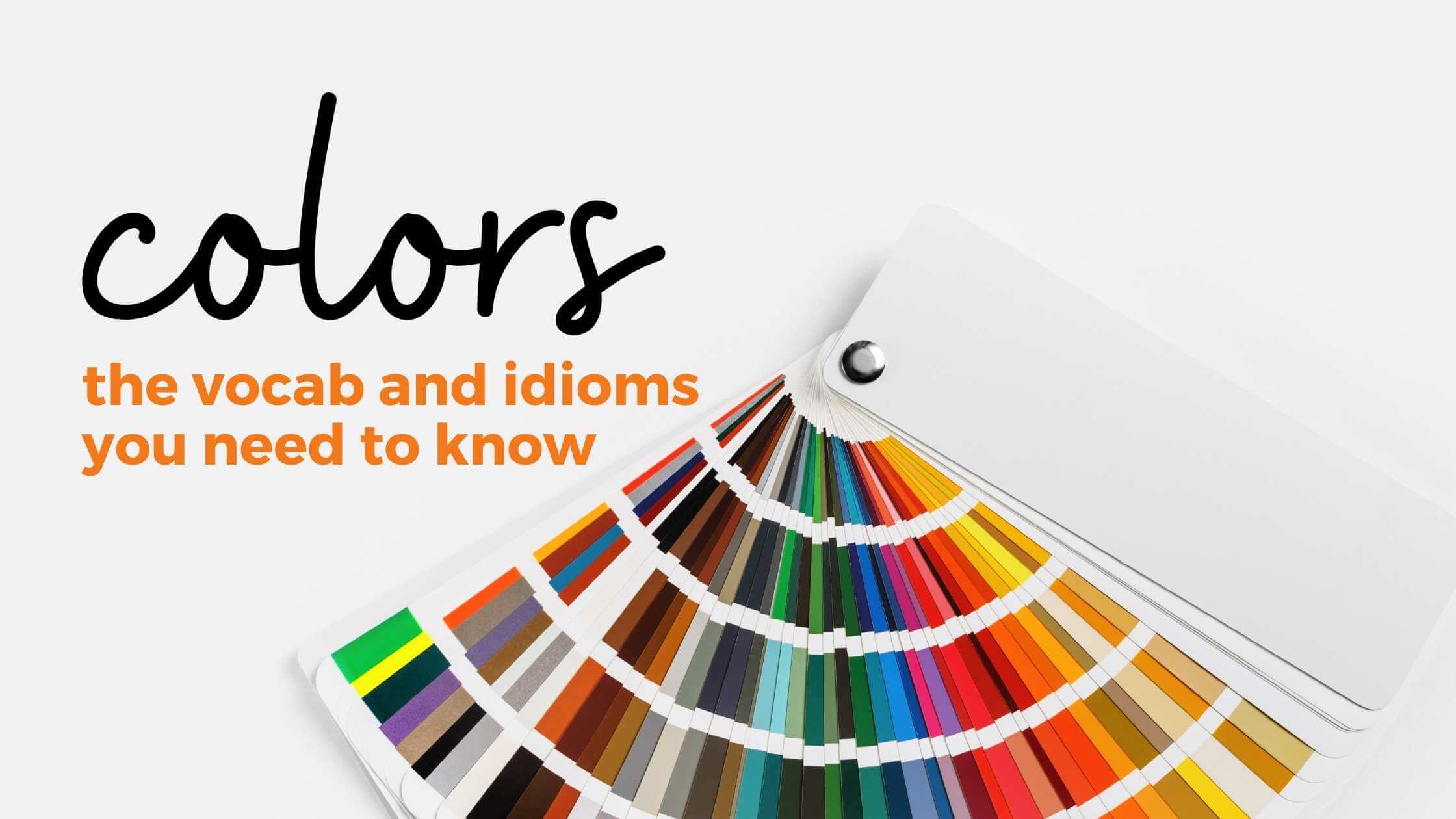Your Ultimate Color Vocabulary Guide plus Fun English Idioms
So, maybe you already know the names of all colors in English. What else is there to learn? Turns out, the topic of color is much more than just the names of those 11 main colors you know. This article will help you learn colors in English, but beyond that you can learn how to describe actions related to colors, some color psychology and even about the color naming system. Plus, who hasn’t wondered, is it color or colour?
Can you imagine if the world was black and white?
Thank God it isn’t, right?
Actually, there are more colors in the universe than you are probably aware of. But let’s start with the basics.
Basic vocabulary for colors in English
Black and white
You may have heard people saying that black and white are not really colors. The thing is: it all depends on how you define color. According to the scientific definition, color is the visible spectrum of light waves and, therefore, black and white would not be considered colors. However, if you consider the way the human eye processes light, then yes, they are colors.
Look at your closet. Do you have more white or more black clothes?
Main colors
The three primary colors are red, yellow, and blue. They can be combined in different ways to produce other colors. They are the root of all other colors.
The ones which are called secondary colors are orange, green, and purple. Each one of them is made by mixing the primary colors. You probably remember this from school, but yellow and red make orange, red and blue make purple, and blue and yellow make green.
The seven colors of the rainbow are, in order: red, orange, yellow, green, blue, indigo, and violet.

There is a color not yet described. Do you know what is missing? It is the least popular color according to public opinion surveys in Europe and the United States. Many people associate this color with plainness, poverty, or unhygienic situations. On a positive note, this color is also linked to wildlife, autumn, baking and warmth.
This color is a composite color of red, yellow and black or blue.
Word order: color first, then the noun
Do you know why we say, “The White House” and not “The House White?”
In some languages, adjectives usually come after the noun that they modify. In English, it is the opposite. So, if you want to say something about a car that is black, you will have something like this:
She has a black car.
Some other examples are:
- I only have black clothes in my closet.
- I loved the green dress you were wearing yesterday!
The next level of English color vocabulary
As I mentioned earlier, there are millions of colors, but we only have names for 11 main color stems. That does not mean you cannot describe them without more sophistication. Keep reading to learn new ways to talk about all colors in English.
Shade and hue: what’s the difference between them?
Whenever you are talking about colors, you may hear the words shade and hue. Let’s understand the meaning of them. Hue refers to a pure color. Nothing is added to it. A shade is created when we add black to any hue. It darkens the hue and the color it creates is more intense. For instance, take a look at the shades of purple and shades of blue below.

Don’t get confused – the word ‘shade’ usually refers to color, but there is also the expression ‘throw shade’, which is used widely on the Internet. According to the Cambridge Dictionary, ‘throw shade’ means “to criticize someone publicly and show that you do not respect him or her”.
Example: I don’t like Mary. She is always throwing shade at people.
Dark and Light colors
When you need to express shades of colors, you can also use dark and light. Dark colors are hues which have black added to them. Light colors are hues with white added to them. For instance:
- I like that light pink dress.
- Do you think that dark orange purse matches this outfit?
Changing colors – some verbs to describe this
Have you ever bought a lovely new outfit, with a vivid (very intense) hue, only to wash it with other clothes and have the color change? I hate that! If a color permanently changes on something, you can use the verb dye. For example:
My new blue jeans dyed all my white shirts blue!
What if you are drinking a lovely glass of red wine, and all of a sudden someone bumps into you, and the wine goes all over your clothes. Most likely, the vivid red pigment will stain your clothes and the color may never come out.
Some animals have amazing color change options. There are fish that glow in the dark, so there is always light around them. Others can match the colors of their surroundings by camouflaging so that they have the same colors as plants or other animals. Some poisonous animals brighten by making their colors more vivid as a way to warn their predators, and others fade their colors as a way to hide, by making their colors less vivid.
Frequent questions about colors and more information
Color or colour: which word is correct?
Both spellings are correct. The difference between them is that color is the spelling used in the United States, while colour is how other English-speaking countries, such as Australia, England, New Zealand, spell it. You can use either term, but it is best to be consistent with all your spelling choice. Therefore, if you choose to use ‘colour’, you should use British style spellings for all other words.
Gray or grey: which word is correct?
Here we have another spelling situation. Gray is more frequent in American English, and grey is common in British English.
Fun fact: the TV show Grey’s Anatomy has nothing to do with the color gray/grey. Grey is actually the last name of the main character, Dr. Meredith Grey.

Pantone: a color matching system
Have you ever heard of Pantone?
Founded in the 1950s, this company based in New Jersey developed the Pantone Color Matching System, the most important color matching system in the world, back in 1963. At that time, they categorized 500 colors. In 2010 they introduced a new system with over 1,300 colors and in 2019, after adding 294 new colors, the number has a total of 2,161 Pantone colors. The tool organizes color through a numbering system and is used by different industries, such as textiles, apparel, beauty, and industrial design.
Color of the year
The Pantone Color Institute selects a “Color of the Year” every year since 2000. After much research, the selected color is always announced in December of the previous year. The color they select ends up influencing the world of design and marketing. For 2020, the Institute has chosen Classic Blue. According to them, this color brings a sense of peace and tranquility to the human spirit.
We hope you learned more about how to talk about colors in English. If you want more practice, check out this games and exercise page about colors.
What’s your favorite color? Let us know in the comment section down below, will you?
Happy studying!


